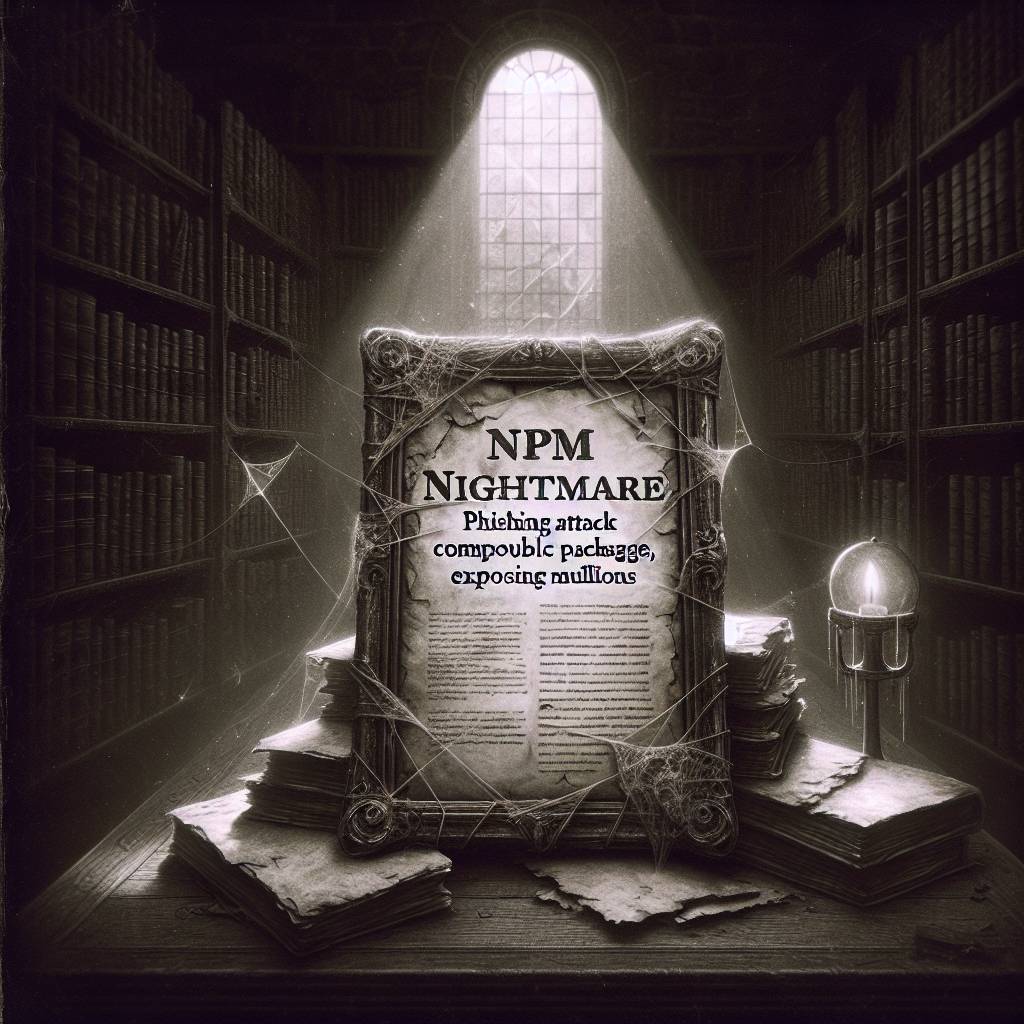npm Nightmare: Phishing Attack Compromises Popular Package, Exposing Millions
npm package eslint-config-prettier got phished harder than a bass at a fishing derby. Its maintainer took the bait, resulting in malicious versions being released. With 36 million weekly downloads, even a two-hour window had big potential to spread chaos. Remember, friends don’t let friends merge pull requests without a safety net!

Hot Take:
Oh, npm, you never fail to keep developers on their toes! This time, you spiced things up with a phishing attack that’s got more twists than a soap opera. Just when you thought it was safe to auto-update, here comes eslint-config-prettier starring in its own horror show: “The Revenge of the Stolen Credentials!” Developers, get your popcorn and manual reviews ready, because this one’s a nail-biter!
Key Points:
- The eslint-config-prettier package, with over 3.5 billion downloads, was compromised due to a phishing campaign.
- Attackers used stolen credentials to publish malicious versions, distributing the Scavenger RAT.
- Compromised versions were live for less than two hours but had a significant potential impact due to the package’s popularity.
- Automated tools like Dependabot contributed to spreading the compromised versions without manual review.
- Developers are urged to practice better dependency management and cautious automation.
Consider Phishing Tackled
In a plot twist that no one saw coming, the popular npm package, eslint-config-prettier, was caught in a phishing scam. It was like a thriller movie where the villain sneaks in through the backdoor, except this time, the villain was a sneaky email playing the role of npm support. The maintainer, bless their unsuspecting heart, took the bait, leading to a classic case of stolen credentials and malicious uploads. The script was set to unleash the Scavenger RAT on Windows systems, a plot device as old as time itself (or at least as old as the internet).
The Fast and the Phishy
Once the credits rolled and the credentials were nabbed, the attackers didn’t waste a second. They dropped their malicious payloads faster than a kid drops vegetables off their plate. Within less than two hours, the infected packages were out in the wild, potentially affecting millions of downloads. Think of it as a high-octane chase scene, but instead of cars, it was automated tools like Dependabot mindlessly pulling in the bad guys. It’s a reminder that sometimes, it’s not the speed that kills, but the lack of manual oversight.
Automated Updates: The Double-Edged Sword
Automated updates, the unsung hero of the development world, turned into a bit of a villain in this story. These handy tools are designed to keep the code fresh and up-to-date without breaking a sweat. But, as this incident shows, they can also serve as an unintentional getaway car for malicious code. GitHub’s Dependabot, for instance, was caught red-handed, merging pull requests with all the caution of a toddler in a candy store. While automated updates are great for keeping things current, they sure could use a babysitter to prevent them from accidentally inviting trouble over for dinner.
Dependency Management: A Developer’s Dilemma
Dependency management, the perennial thorn in every developer’s side, is once again in the spotlight. This incident put a magnifying glass on how easily things can go sideways when dependencies aren’t handled with care. The eslint-config-prettier package, often declared as a direct dependency, opened the door to downstream compromises faster than you can say “npm install.” ReversingLabs, playing the role of the wise sage, recommended a few age-old practices: delay updates, separate dependencies, and never trust an automated process without a second pair of eyes. It’s like they always say, “Trust, but verify.”
Lessons Learned: The Sequel
Every cybersecurity incident comes with its own set of lessons, and this one is no different. The message is clear: in a world where supply chain attacks are as common as cat videos, developers need to up their security game. Dependency hygiene and cautious automation are the new black, and developers are encouraged to embrace them like a long-lost sibling. After all, in the grand scheme of things, it’s always better to be safe than to be the unwitting star of the next big npm security drama.
In conclusion, as developers, it’s time to sharpen those manual review skills and keep a wary eye on those automatic updates. The world of npm packages is a wild west of dependencies, and only the cautious survive. So, grab your cowboy hat and your best debugging tools, because in this world, you’re either the hunter or the hunted.
